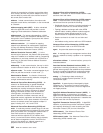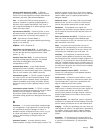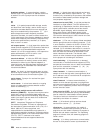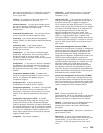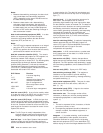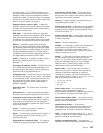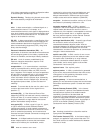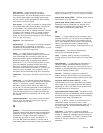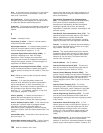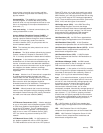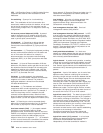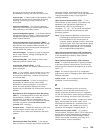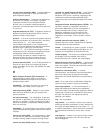host. In the Internet suite of protocols, an end system.
The end system can be any workstation; it does not
have to be a mainframe.
hub (intelligent). A wiring concentrator, such as the
IBM 8260, that provides bridging and routing functions
for LANs with different cables and protocols.
hysteresis. The amount the temperature must change
past the set alert threshold before the alert condition is
cleared.
I
I-frame. Information frame.
information (I) frame. A frame in I format used for
numbered information transfer.
input/output channel. In a data processing system, a
functional unit that handles transfer of data between
internal and peripheral equipment. (I) (A)
Integrated Digital Network Exchange (IDNX). A
processor integrating voice, data, and image
applications. It also manages the transmission
resources, and connects to multiplexers and network
management support systems. It allows integration of
equipment from different vendors.
integrated services digital network (ISDN). A digital
end-to-end telecommunication network that supports
multiple services including, but not limited to, voice and
data.
Note: ISDNs are used in public and private network
architectures.
interface. (1) A shared boundary between two
functional units, defined by functional characteristics,
signal characteristics, or other characteristics, as
appropriate. The concept includes the specification of
the connection of two devices having different
functions. (T) (2) Hardware, software, or both, that
links systems, programs, or devices.
interior gateway. In Internet communications, a
gateway that communicates only with its own
autonomous system. Contrast with
exterior gateway
.
Interior Gateway Protocol (IGP). In the Internet suite
of protocols, a protocol used to propagate network
reachability and routing information within an
autonomous system. Examples of IGPs are Routing
Information Protocol (RIP) and Open Shortest Path First
(OSPF).
intermediate node. A node that is at the end of more
than one branch. (T)
intermediate session routing (ISR). A type of routing
function within an APPN network node that provides
session-level flow control and outage reporting for all
sessions that pass through the node but whose end
points are elsewhere.
International Organization for Standardization
(ISO). An organization of national standards bodies
from various countries established to promote
development of standards to facilitate international
exchange of goods and services, and develop
cooperation in intellectual, scientific, technological, and
economic activity.
International Telecommunication Union (ITU). The
specialized telecommunication agency of the United
Nations, established to provide standardized
communication procedures and practices, including
frequency allocation and radio regulations worldwide.
internet. A collection of networks interconnected by a
set of routers that allow them to function as a single,
large network. See also
Internet
.
Internet. The internet administered by the Internet
Architecture Board (IAB), consisting of large national
backbone networks and many regional and campus
networks all over the world. The Internet uses the
Internet suite of protocols.
Internet address. See
IP address
.
Internet Architecture Board (IAB). The technical
body that oversees the development of the Internet
suite of protocols that are known as TCP/IP.
Internet Control Message Protocol (ICMP). The
protocol used to handle errors and control messages in
the Internet Protocol (IP) layer. Reports of problems and
incorrect datagram destinations are returned to the
original datagram source. ICMP is part of the Internet
Protocol.
Internet Control Protocol (ICP). The VIrtual
NEtworking System (VINES) protocol that provides
exception notifications, metric notifications, and PING
support. See also
RouTing update Protocol (RTP)
.
Internet Engineering Task Force (IETF). The task
force of the Internet Architecture Board (IAB) that is
responsible for solving the short-term engineering needs
of the Internet.
Internetwork Packet Exchange (IPX). (1) The
network protocol used to connect Novell’s servers, or
any workstation or router that implements IPX, with
other workstations. Although similar to the Internet
Protocol (IP), IPX uses different packet formats and
terminology. (2) See also
Xerox Network Systems
(XNS)
.
Internet Protocol (IP). A connectionless protocol that
routes data through a network or interconnected
networks. IP acts as an intermediary between the higher
protocol layers and the physical network. However, this
700 MRS V3.2 Software User’s Guide



